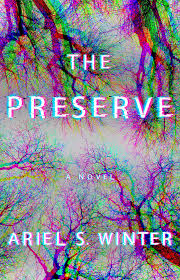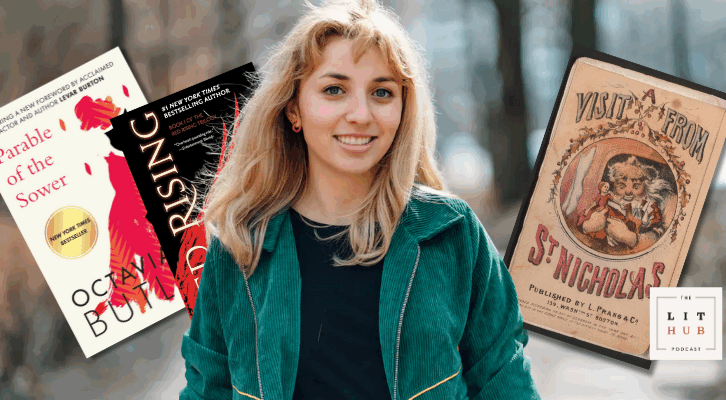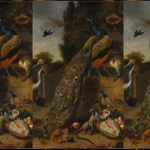About one-third of the way through my new novel The Preserve, Chief of Police Jesse Laughton and his former partner, the Series Fourteen, Class Five robot Kir, enter the Medical University of South Carolina’s hospital. The security guard reminds them to don their face masks.
“Wearing surgical face masks was [Laughton’s] least favorite part of being in a hospital. He hated the warm, damp feeling of his own breath coating his cheeks and nose, but it was the law.”
When I wrote that scene, the idea that I would be legally required to wear my own face mask in the months before the novel came out was impossible. The future I was writing towards was focused on humanoid, self-aware, artificial intelligences rather than the fictional pandemic that had given rise to the AI’s power. Artificial intelligence was the part of my novel that I envisioned for the future, not a plague.
While all fiction writing could be called a thought experiment, writing about the future is a special kind of thought experiment that doesn’t just ask how particular events affect particular people, but how collective historic events affect the way all people live. If one thing changes—technology, biology, history—what does life look like then? To view these kinds of science fiction visions only as predictions, like articles that look at “Star Trek” or “Back to the Future 2” and ask, ‘How much did they get right?’ is to miss the trickier experiment that underlies the fiction. “Star Trek” predicted doors that open when you approach, pocket-sized communicators, and computers you can speak to. “Back to the Future 2” promised hover boards, rehydrated food, and flying cars. Regardless of which was more accurate, looking only at the technology is to take a narrow view of the future. The harder part is trying to imagine how humans actually live as a result.
This kind of nuance is revealed in the question that Nick Jonas’s character in “Jumanji: Welcome to the Jungle” asks the people he meets from his future, “Does phone mean something different in the future?” Coming from a time before the widespread use of cell phones, he can’t understand why a phone seems quite so important. It isn’t the technology from the future that is hard to understand, it is the way that it alters people’s lives, their language, their thoughts, everything. While it is possible to extrapolate what a smart phone might do, it takes imagination to see how a smart phone becomes an essential part of life.
In The Preserve and my previous book Barren Cove, sentient robots are the technology that has changed, but the books explore how that technology changes what it means to be human. If something with a human-like intelligence is immortal—because it can always be repaired and maintained—how do we then look at our own mortality? Does it make the knowledge of our own death more pronounced? And the corollary, what gives the robot’s endless life purpose? That is the main thought experiment that drives the books. But the smaller, secondary thought experiment was: what does life look like after a devastating human plague?
Right now, that’s the thought experiment we’re all undertaking when we say, ‘when things go back to normal.’ Will laws about face masks go away or will life become like The Preserve, people still wearing masks decades after the plague has ended? My twelve-year-old daughter points out that people wore masks during the 1918 Spanish Influenza, but that we weren’t still wearing masks before COVID. If wearing masks ended last time, it will surely end this time as well. But the current fear makes it hard to imagine a time when we will discard our masks. It is the sheer reality of the unknown that arrests the mind’s ability to settle on a probable future.
That future would ostensibly be a time when we feel comfortable sitting in a restaurant full of strangers less than six feet apart. In The Preserve, there is no social distancing, but there is still anxiety about close contact. The robots have set aside land for humans to live in a robot-free environment. Up until the creation of the preserves, there were so few people left post-pandemic that they were socially distanced just by the realities of living. With the few remaining people moving into a small area, there are humans who fear that the close proximity is an invitation to more illness. There are protestors with signs that read, “Get thee to a quarantine.”
It is that residual fear, the psychological effects of a pandemic that remain after it is over, that is hard to imagine right now. Will people shake hands anymore? Will people hug again? Will people gather in groups larger than ten people? Will people continue to have their temperature taken to simply be allowed into some place? Will schools resume in-person learning? But even less obviously, will people be able to sneeze without causing a panic? Will blowing out birthday candles make people uncomfortable? Will riding in an elevator feel claustrophobic? Will we be able to go back to just not thinking about germ theory? That would be normal, right?
In The Preserve, these worries are somewhat generational. People who were adults during the pandemic remain anxious and on guard, while people who were young during the pandemic have a higher tolerance to risk, and the children know nothing about it at all. So perhaps the answer to those questions isn’t that we will personally return to the same kind of life we lived before COVID, but rather that people as a whole will as time goes by.
So imagine the future that looks like our past from only a year ago. You go out to run errands, flitting in and out of stores, running into people you know and hugging, agreeing to get the kids together after school. You go out to dinner and to the movies and drive the babysitter home in your car. You touch your face with impunity, you haven’t taken your temperature in years, and you never wear a mask.
How hard is that to imagine?
*


















